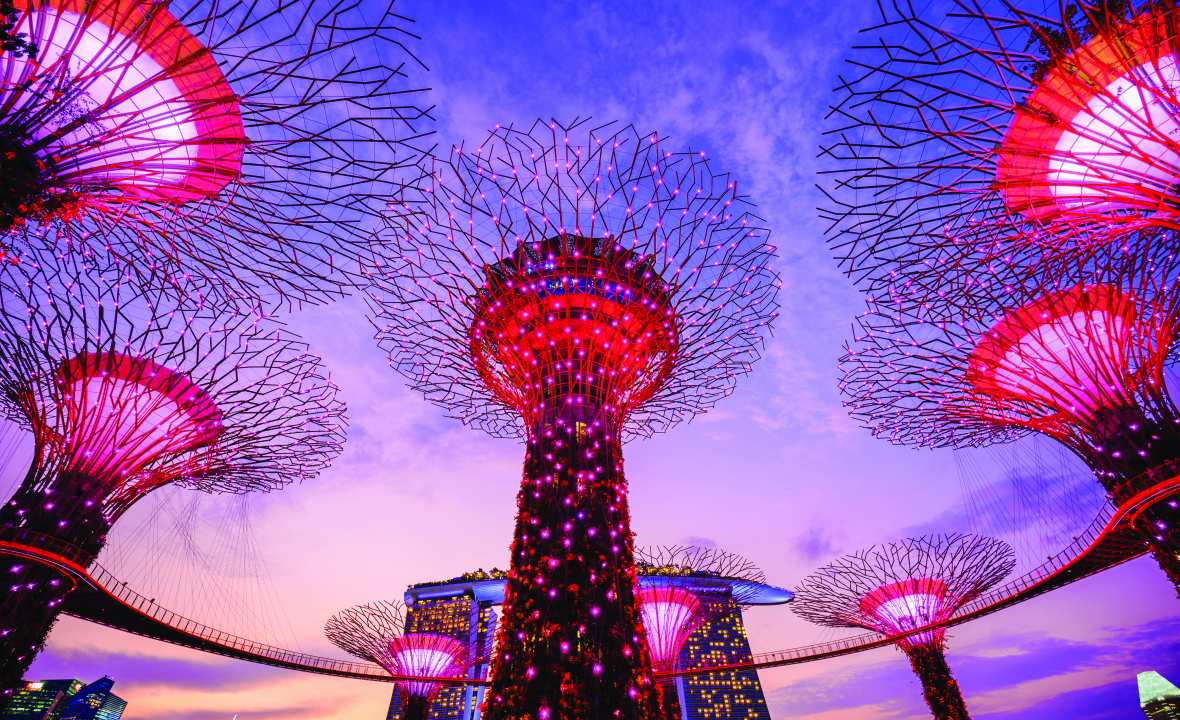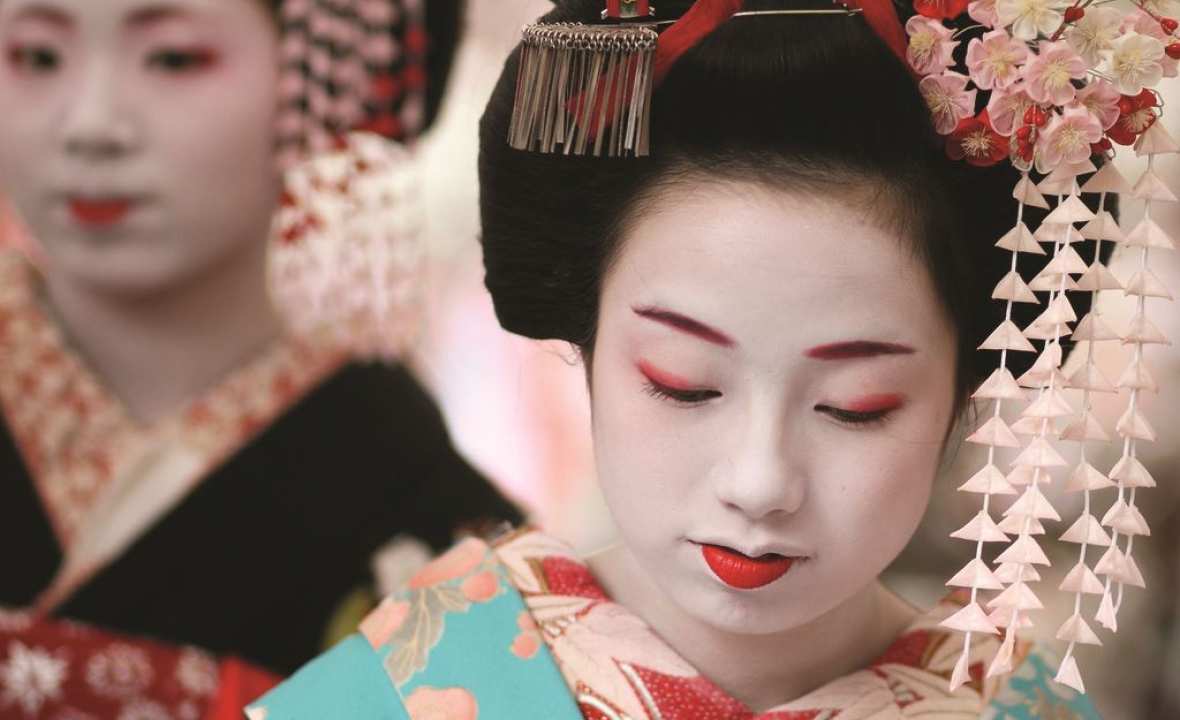Japan Discovery


Snapshot
- 16 days
- Guided Tour
- Flights Included
- Australia Return
- Multiple departures
From
$11,795*
per person twin share
BOOK NOW
Overview
Modern Japan retains much of its traditional charm, where ancient customs infuse daily life. Explore the true highlights of Japan on this fascinating adventure. Discover Tokyo, where ornate temples and glass skyscrapers reside effortlessly alongside each other. Be amazed at the beauty of Mt Fuji, experience an authentic ryokan guesthouse in Hakone, ride the bullet train to cultural Kyoto, and pay tribute in moving Hiroshima.
Inclusions
Travel
- Return economy-class flights from Australia to Japan. Taxes included
- Airport transfers on the first and last day of tour
- All touring in air-conditioned vehicles
- 3 bullet train journeys in Japan
- Limited Express Train from Takayama to Nagoya
Accommodation
- 12 nights in 3-4 star hotels
- 1 night in a traditional ryokan guesthouse, Hakone
Sightseeing
- Visit Imperial Palace East Garden, a calm oasis in buzzing Tokyo
- Enjoy a sumo wrestling demonstration and a traditional Chanko-Nabe lunch
- Stroll through the famous Ginza District
- Experience the famous street intersection at Shibuya Crossing
- Admire the city lights of Tokyo Bay while enjoying a dinner cruise
- Tokyo sightseeing including Asakusa Sensoji Temple and Nakamise Shopping Arcade
- Sushi Making experience and lunch
- Visit Iyashi no sato Nenba, a former farming village, reopened as a museum
- See the iconic Mt Fuji while riding the Hakone Ropeway (weather permitting)
- Spend a night in a traditional ryokan guesthouse
- Visit Matsumoto Castle built in the 16th century and one of Japan's premier historic castles
- Enjoy a soba noodle making class on the way to Nagano
- Visit the 7th century Zenkoji Temple
- Take in the sights of historic Takayama by foot
- Free time to explore Miyagawa Open Air Market
- Wander through Shirakawa-go, with its famous gasshō-zukuri thatched roofs
- Learn about the Japanese tradition of washi papermaking in Gokayama
- Explore Kyoto and sample the famous sake beverage
- Tour the Fushima Inari Shrine
- Stroll the Philosopher's Walk, the same path influential 20th-Century Philosopher & Kyoto University Professor Nishida Kitaro took during meditation
- Take part in a black ink calligraphy class
- Delve into the custom of a traditional tea ceremony in Kyoto
- Kinkakuji Temple (Golden Pavilion)
- Enjoy a Buddhist lunch at Shigetsu (Tenryuiji Temple)
- Stroll through the Arashiyama Bamboo forest and see the Togetsukyo Bridge
- Visit the island Miyajima and see the giant Itsukushima Torii Gate (currently under maintenance)
- Tour the Hiroshima Peace Park, and visit the Atomic Bomb Dome and the very moving Peace Memorial
- Visit Himeji Castle, regarded as one of the finest examples of prototypical Japanese castle architecture
- Learn the way of the Samurai in Osaka, Japan's pre-modern warriors
Itinerary
Day 1 Depart Australia
Day 2 Arrive Tokyo
Welcome to Japan, a country that combines the ultra-modern with the ultra-traditional in such a way that it seems completely natural. We begin in Tokyo, Japan’s buzzing capital city. Formerly known as Edo, a small local fishing village, the Tokyo of today is a vibrant metropolis renowned for its advanced technology and diverse fashion sense, intermingled with the ancient traditions of Japanese culture.
In Tokyo, we'll find an unlimited choice of shopping, entertainment, culture and exquisite food as we get acquainted with the city on our own this afternoon, before meeting your fellow travellers and tour director over a welcome drink this evening.
Day 3 Tokyo
One of the world’s main economic centres, Tokyo is a city that presents a different view of itself at every turn. Starkly modern, it becomes a jewel box at night with a glittering display of neon and fluorescent lights. But you can retreat to quiet residential back streets or sculptured gardens and still find harmony, scale and simplicity the Japanese have prized for centuries.
Our day begins with a visit to the scenic and spacious Imperial Palace East Garden, which provides a calm oasis amid the bustle of Tokyo. The garden is the former site of Edo Castle's innermost circle of defence. As none of the castle's main buildings remain today, the garden has been created in their place.
SPECIAL EXPERIENCE
Watch a sumo wrestling demonstration before enjoying a traditional Chanko Nabe (sumo stew) lunch at a local restaurant.
This afternoon we’ll stroll through the shopping district of Ginza on our way to dinner. We’ll also experience the hustle and bustle of Shibuya, one of Tokyo’s busiest districts, and home to the famous Shibuya crossing. Approximately 3,000 people can make their way across the intersection at any one time! We take to Tokyo Bay and admire the city lights on a dinner cruise this evening in a typical Japanese-style houseboat from the Heian period, known as a Yakatabune.
(Breakfast, Lunch, Dinner)
Day 4 Tokyo
Tokyo’s downtown Shitamachi district is home to an array of sights, culture and a great mix of old and new. We’ll explore the district this morning visiting the impressive Asakusa Sensoji Buddhist Temple that dates back to the 7th century. Incense burns at the temple to purify and act as a strong form of spiritual offering, or as a way to carry one’s prayers to heaven. Watch as locals and tourists alike purchase bundles of incense (osenko), light them, let them burn and fan the smoke towards themselves. It is said to have healing powers! We’ll also stroll Nakamise Street that is full of quirky shops and local snacks. Don’t miss trying some of the interesting ice cream flavours on offer.
There isn’t a more famous Japanese culinary dish than sushi. We’ll learn the age-old culinary art of making sushi and enjoy the results for lunch.
(Breakfast, Lunch)
Day 5 Tokyo - Hakone
Hakone, part of the Fuji-Hakone-Izu National Park, is less than 100 kilometers from Tokyo and one of the most popular destinations among Japanese and international tourists looking for a break from the big city. It is famous for its hot springs, outdoor activities, natural beauty and the view of nearby Mt Fuji.
This morning we'll visit a former farming village, Iyashi-no-Sato Nenba. After being destroyed by a typhoon in 1966, the village was reconstructed and reopened forty years later as an open-air museum and traditional craft village, complete with restaurants, shops and galleries.
We'll then arrive in the mountainous town of Hakone, where we'll enjoy a cable car ride on the Hakone Ropeway and see incredible views of the iconic Mt Fuji (weather permitting). We will stop along the Hakone Ropeway and see the magnificent Owakudani Valley, created about 3,000 years ago when the Hakone Volcano last erupted. Tonight, we’ll be staying in an authentic ryokan guesthouse, where we'll sleep on traditional Japanese-style bedding made up of a futon bed on tatami mats on the floor. We will also have the chance to bathe in a natural onsen (hot springs) and enjoy a traditional Japanese dinner.
(Breakfast, Dinner)
Day 6 Hakone - Matsumoto - Nagano
Surrounded by lush mountains, Nagano is a quaint city with temples that have played an important role in the lives of pilgrims for almost 1,000 years. The city also hosted the 1998 Winter Olympic Games with some of the former Olympic facilities still dotted throughout the city.
We’ll make our way to Nagano today via the mountain city of Matsumoto. Situated in a valley with the northern Japan Alps as a backdrop, the city is home to one of Japan’s premier historic castles, Matsumoto Castle. We’ll visit the castle which was built in the 16th century, admiring its architecture and learning about its rich history.
SPECIAL EXPERIENCE
Immerse yourself in Japanese culture during a soba noodle class on our way to Nagano. These delicious noodles are used in a variety of Japanese dishes.
Learn about these delicious buckwheat noodles that are used in a variety of Japanese dishes and take away a new cooking skill you can bring home with you.
This afternoon, we’ll visit Zenkoji Temple, one of Japan’s oldest and most important Buddhist temples. It was founded in the 7th century and built in dedication to the first known Buddhist statue to be brought to Japan.
(Breakfast)
Day 7 Nagano - Takayama
Located in Gifu, Takayama is a relatively small yet traditional city with an abundance of old inns, shops and sake breweries. Takayama is a city best known for its background in carpentry; it is believed Takayama craftsmen worked on the Imperial Palace in Kyoto and on many of the temples in Kyoto and Nara. Its high altitude and relative isolation allowed Takayama to remain relatively untouched by outside influences for a 300-year period.
Upon arrival in the city, we’ll explore the narrow streets of the beautifully preserved Old Town on foot. We’ll see Takayama Jinya, a traditional Japanese building dating back to 1816, before making our way to the Sanmachi Suji District. The quaint streets of the district are lined with old-style merchant houses that date back to the Edo and Meiji periods. Today, these houses are used as sake breweries, shops and restaurants.
(Breakfast)
Day 8 Takayama – Shirakawago – Gokayama – Takayama
One of the biggest morning markets in Japan, the Miyagawa Open Air Market is a feast for the senses. Located on the banks of the Miyagawa River, we’ll wander the many stalls, and check out the range of fresh fruit, vegetables, spices and local souvenirs on offer this morning.
Next, we’ll visit the UNESCO World Heritage-listed site of Shirakawa-go, famous for its gasshō-zukuri thatched-roof farmhouses characterised by their extremely steep roofs, some of which are more than 250 years old. Gasshō-zukuri means ‘constructed like hands in prayer’, as the farmhouses' roofs resemble the hands of Buddhist monks in prayer. This architectural style, developed over many generations, was designed to withstand the large amounts of heavy snow that fall during winter. We’ll visit the largest gasshō-zukuri farmhouse in the town, where one of the town’s wealthiest families once lived. Later we’ll enjoy a traditional Japanese lunch at a local restaurant.
We’ll then observe the traditional art of Japanese Washi papermaking in Gokayama. Some artists enjoy working with rice paper because of its distinct texture and slight translucent appearance. Rice paper, or Washi as it is known, is commonly used in the traditional paper-folding art of Origami, practiced since the early 1600s.
(Breakfast, Lunch)
Day 9 Takayama – Kyoto
Kyoto, one of Japan’s most beloved cities is our destination today. This ancient city was the imperial capital of Japan for 1,000 years with the Emperor residing in its elaborate palaces. Kyoto is considered the country’s spiritual capital today and is graced with an abundance of temples, pavilions, gardens and museums. While there are many keen tourists looking to imbibe the serenity that Kyoto exudes, it is still possible to find a peaceful moment to personally connect with your surrounds.
All aboard Japan’s famous bullet train system for our journey to Kyoto. Upon arrival we’ll delve into the unique craft of sake brewing.
SPECIAL EXPERIENCE
Sample the famous Japanese beverage, sake, and learn about the brewing process.
Later today we’ll explore the incredible tunnel of orange Torii Gates that make up Kyoto’s famous Fushimi Inari shrine, dedicated to the god of rice and sake in the 8th century. Its resplendent orange Torii Gates are a sight to behold, numbering more than 10,000 as they wrap themselves around the base of the Inari Mountain.
(Breakfast)
Day 10 Kyoto
We’ll delve further into the delightful Japanese culture today. A morning walk along Philosopher’s Path is a tranquil start to our day of exploring Kyoto. Named after Nishida Kitaro, one of Japan’s most famous philosophers who meditated along the path while walking to university every day, the path is an enchanting and peaceful place in the city. We’ll learn about some of Japan’s most popular art forms next.
SPECIAL EXPERIENCE
Delve into the stunning art form of Japanese black ink calligraphy and try your hand at perfecting this ancient art.
Afterwards, we’ll experience a Japanese tea ceremony. In Japan it can take years to master the art of the tea ceremony, the art form of cha-no-yu. With many distinct styles, the different configurations of tatami (straw floor mats), utensils and temae (the preparation), the hanging scrolls selected with attention to the season and theme, and the chabana (floral arrangement) are all purposefully chosen to infuse meaning into the ceremony.
(Breakfast)
Day 11 Kyoto
This morning we transfer to Toei Kyoto Studio Park. This unique theme park houses movie sets still used today. The park features a collection of various traditional buildings used as backdrops for filming historical movies and television dramas. Visitors are welcome to observe the action of filming if there is any scheduled filming taking place.
We will spend a few hours exploring the park before heading to Nishiki Market for some shopping. The narrow shopping street has been operating for over 400 years. We’ll then visit Gion, Kyoto’s entertainment district that celebrates the past and present of Japan. Filled with shops, fine hotels, restaurants and interesting attracts, we will enjoy all that there is to see and do in Gion.
(Breakfast)
Day 12 Kyoto – Hiroshima
Hiroshima, a symbol of the utter devastation of war continues to build its reputation today as a symbol of peace. When the first atomic bomb exploded over Hiroshima on 6 August 1945, the city was obliterated. This moving city is our destination today.
We spend our final time in Kyoto visiting some of the city’s most incredible temples. Our first stop is the stunning Kinkaku-ji Temple (Golden Pavilion), an exemplar of traditional Japanese architecture. The temple's top two floors are completely covered in gold leaf and the pavilion is set amongst beautiful gardens. We'll then enjoy a typical Buddhist lunch before touring the beautiful UNESCO World Heritage-listed Tenryu-ji Temple, ranked top of Kyoto's five great Zen temples. Later we'll walk through the otherworldly Arashiyama Bamboo Forest for a moment of peace and tranquillity as we stroll along the paths that meander through the endless stalks of towering bamboo, Our final stop is a visit to the Togetsukyo Bridge, or ‘Moon Crossing Bridge’, originally built in the Hein Period for nobles who came to enjoy the natural surrounds.
This afternoon, we travel to Hiroshima by bullet train.
(Breakfast, Lunch)
Day 13 Hiroshima – Miyajima – Hiroshima
The island of Miyajima lies just off the coast from Hiroshima and is renowned for its solitude, magnificent views and the Shrine of Itsukushima, built on wooden piers over the water. The shrine’s Torii is out at the head of a bay and is one of the most photographed places in Japan. The giant Torii Gate seems to float on top of the water at high tide, its orange hue contrasting vibrantly with the blue of the surrounding water. We’ll take the ferry to the island this morning and spend time to ourselves enjoying this UNESCO World Heritage-listed site.
This afternoon we’ll visit some of Hiroshima’s important sites, including the Peace Memorial Park, the Atomic Bomb Dome, and the very moving Peace Memorial Museum, commemorating the dropping of the atomic bomb over Hiroshima.
(Breakfast)
Day 14 Hiroshima – Osaka
A kaleidoscope of vibrant colour, traditions and culture, Osaka is Japan’s second largest city. Formerly known as Naniwa, the city was Japan’s first recorded capital city.
Our day begins with a bullet train ride to Himeji Castle. As Japan’s largest and most-visited castle, it is regarded as the finest surviving example of Japanese castle architecture. UNESCO World Heritage-listed Himejijō, in its current form, dates back to 1617 and has remained intact despite extensive bombing during World War II and a great earthquake in 1995. We’ll enjoy time at the castle and in the nearby beautiful Kokoen Gardens, a short walk from the castle’s main gate.
SPECIAL EXPERIENCE
Learn the way of the Samurai, the warriors of pre-modern Japan, during an interactive lesson. Samurai were elite soldiers and adept with the bow and sword.
Many Samurai lived by the concepts of loyalty to one’s master, self-discipline and ethical behaviour. They were also adept with the bow and sword. We’ll learn about the art and try out the movements ourselves.
Tonight, we’ll enjoy a Japanese-style group farewell dinner.
(Breakfast, Dinner)
Day 15 Depart Osaka
Today marks the end of our incredible journey across Japan. We hope you leave with fantastic memories!
(Breakfast)
Day 16 Arrive Australia
Dates/Prices
| START DATE | END DATE | PER PERSON TWIN SHARE |
STATUS |
|---|---|---|---|
|
17 Mar 25 |
1 Apr 25 |
$11,795pp |
Limited Seats |
|
23 Mar 25 |
7 Apr 25 |
$11,795pp |
Limited Seats |
|
26 Mar 25 |
10 Apr 25 |
$11,795pp |
Guaranteed Departure |
|
29 Mar 25 |
13 Apr 25 |
$11,795pp |
Guaranteed Departure |
|
11 Apr 25 |
26 Apr 25 |
$12,295pp |
Available |
|
13 Apr 25 |
28 Apr 25 |
$12,295pp |
Guaranteed Departure |
More departure dates Available, ask your Phil Hoffmann consultant for more information!
*Tour price varies depending on departure date. Advertised pricing based on per person twin share, correct as of 11 November 2024.
* Term and conditions apply:
All pricing subject to change and availability.
Advertised prices are per person twin share unless stated otherwise.
Offers may be withdrawn at any time. Itineraries are subject to change.
Booking Conditions and Phil Hoffmann Travel Schedule of Professionalism* applies.
Please speak to your Phil Hoffmann Travel Consultant for more information.




